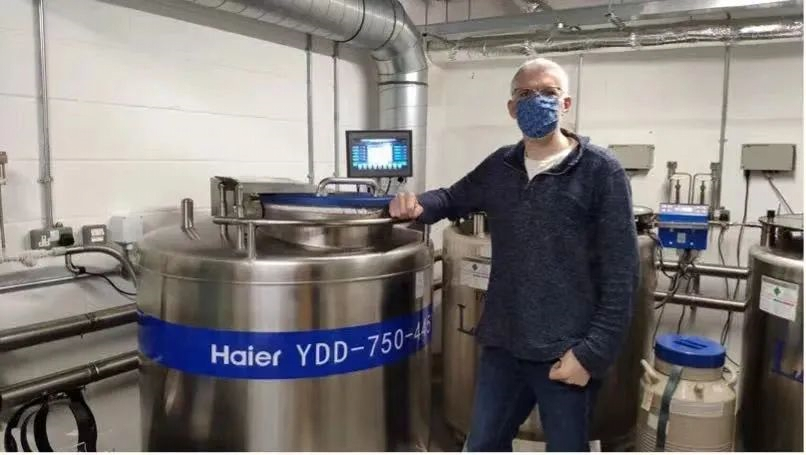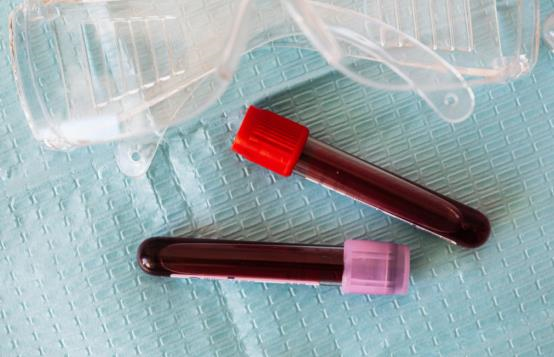The environment that animals rely on has changed dramatically as climate extremes become more and more frequent and climate changes result in climatic zone displacement, which has sped up the extinction of species. Just in last century, we have lost as many species as that went extinct over the previous past 10,000 years.

What can we do to save these endangered animals?
A Beijing stem cell company recently announced that the world's first cloned wild Arctic Wolf made its debut via video 100 days after it was born in the company’s Beijing laboratory. According to experts, the birth of this first cloned wild Arctic Wolf has pioneered the breeding of rare and endangered animals through cloning technology.
However, for now, cloning technology is still genetically deficient, and the survival rate of cloned animals cannot be guaranteed. In response, scientists have proposed to temporarily store the cell samples of endangered animals in liquid nitrogen containers at -196℃based on the cell cryopreservation technology, to improve the animals’ survival rate through future cloning technology.
In major biobanks, biological materials, including cells, are all collected and stored in liquid nitrogen containers.
Liquid nitrogen containers play an important role in biomedical and other fields
In the medical and health field, liquid nitrogen containers are used exclusively for the cryopreservation of organs, skin, blood, cells, and bone marrow, in preparation for future medical research. In the biopharmaceutical field, vaccines, bacteria, and viruses can be stored in liquid nitrogen containers for a long time while maintaining activity, which can accelerate the transformation of scientific research achievements.
As a professional supplier and manufacturer of biobank solutions, Haier Biomedical’s liquid nitrogen storage solutions have received high recognition from overseas users and numerous orders successively from all parts of the world.
The research team of TUSEB from Turkey has ordered a batch of YDD-750-445 liquid nitrogen containers from Haier Biomedical in hope of perfecting its sample library and achieving secure and effective storage. Before reaching such cooperation with Haier Biomedical, the research team tested and investigated several manufacturers.
The TUSEB Biobank Project Leader said, "Compared with similar products, Haier Biomedical's liquid nitrogen containers can store more samples at a lower storage cost per unit sample. YDD-750-445 liquid nitrogen container is an excellent product."

In the UK, Haier Biomedical’s liquid nitrogen containers have also been introduced into the Department of Pharmacology, University of Cambridge.
As a large-sized liquid nitrogen container, the YDD-750-445 can store up to 36,400 vials (internal thread) of the specification of 2ml and is now installed in the storage facility shared by the Medical Research Council (MRC) Toxicology Unit and the Department of Pharmacology.

Designed with a vacuum-insulated stainless-steel tank, the liquid nitrogen container can achieve a high vacuum coverage rate and guaranteed thermal isolation and insulation performance. The innovative lid and small neck opening design can greatly reduce liquid nitrogen volatilization and maintain temperature stability, keeping the inner temperature no higher than -150℃ even after 48 hours of continuous opening. The hot gas bypass can remove the nitrogen gas of ambient temperature from the pipeline before the liquid nitrogen is injected, so that only ultra-low temperature liquid nitrogen is injected into the container, thus preventing the temperature fluctuation of the liquid nitrogen container during the filling process from affecting the sample safety and reducing additional liquid nitrogen consumption.
Haier Biomedical’s Biobank series liquid nitrogen storage solutions are designed to store various biological samples at the maximum storage capacity and the minimum consumption of liquid nitrogen. Each model of the series can be used for both liquid and vapor phase storage. Adhering to the vision of "making life better", Haier Biomedical has never sidestepped our responsibility to improve life science and innovate to ensure healthcare is available to the world through the transformation of technology to meet global needs. Our focus is to deliver the intelligent protection of life sciences, keeping this in mind, Haier Biomedical strives to make contributions to the cause of life sciences continuously under the drive of science and technology through IoT and digital breakthroughs for healthcare globally.














.png)




























